Antibodies Immunological memory Immunological tolerance Lecturer: Oleg Sergeyev


Antibodies Immunological memory Immunological tolerance Lecturer: Oleg Sergeyev
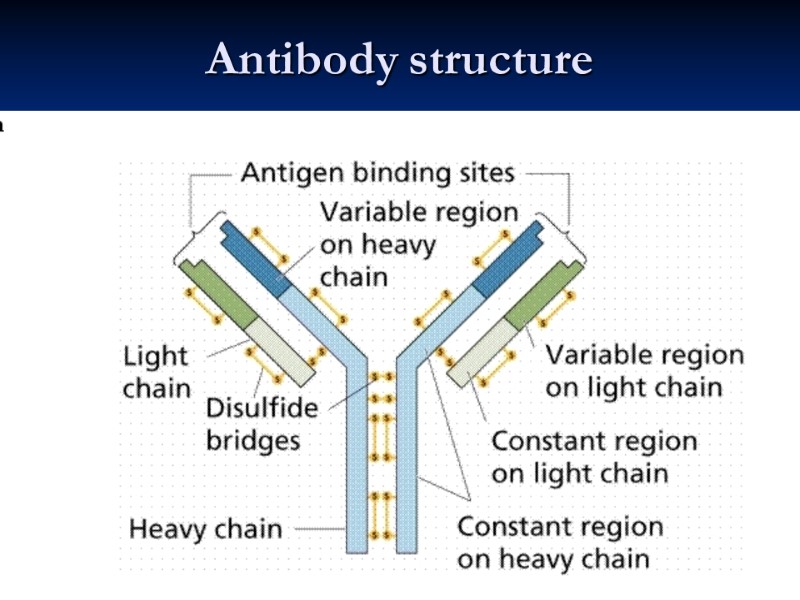
Antibody structure

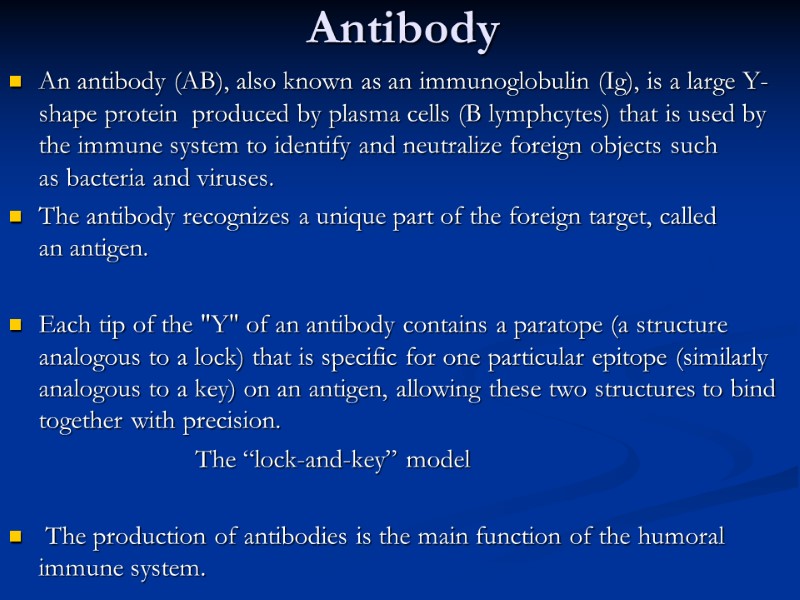
Antibody An antibody (AB), also known as an immunoglobulin (Ig), is a large Y-shape protein produced by plasma cells (B lymphcytes) that is used by the immune system to identify and neutralize foreign objects such as bacteria and viruses. The antibody recognizes a unique part of the foreign target, called an antigen. Each tip of the "Y" of an antibody contains a paratope (a structure analogous to a lock) that is specific for one particular epitope (similarly analogous to a key) on an antigen, allowing these two structures to bind together with precision. The “lock-and-key” model The production of antibodies is the main function of the humoral immune system.
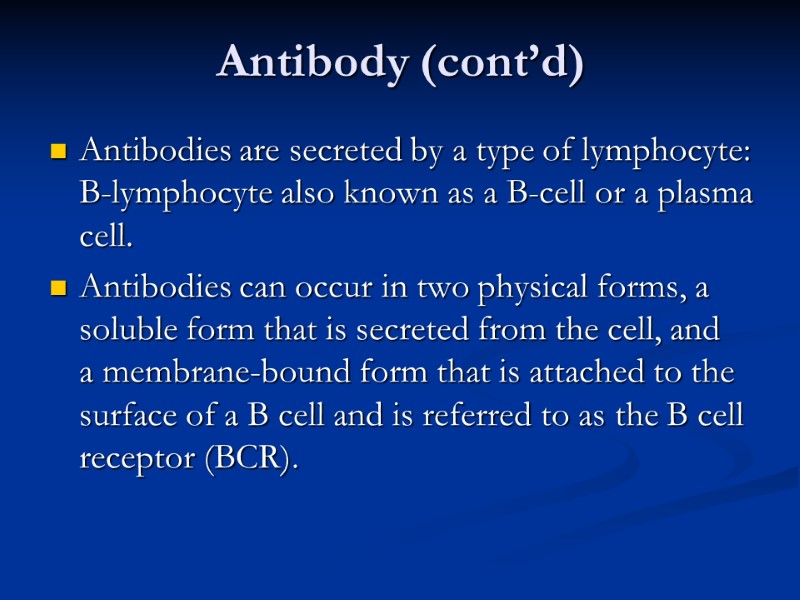
Antibody (cont’d) Antibodies are secreted by a type of lymphocyte: B-lymphocyte also known as a B-cell or a plasma cell. Antibodies can occur in two physical forms, a soluble form that is secreted from the cell, and a membrane-bound form that is attached to the surface of a B cell and is referred to as the B cell receptor (BCR).
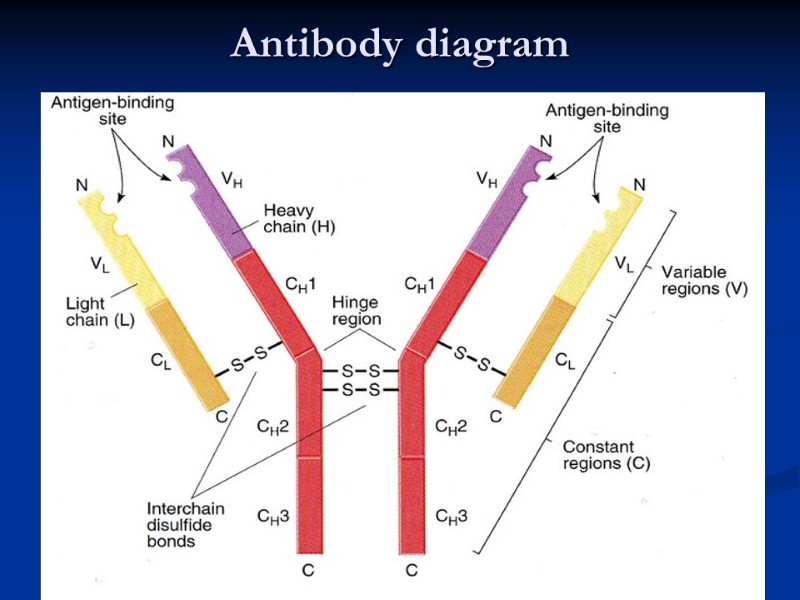
Antibody diagram
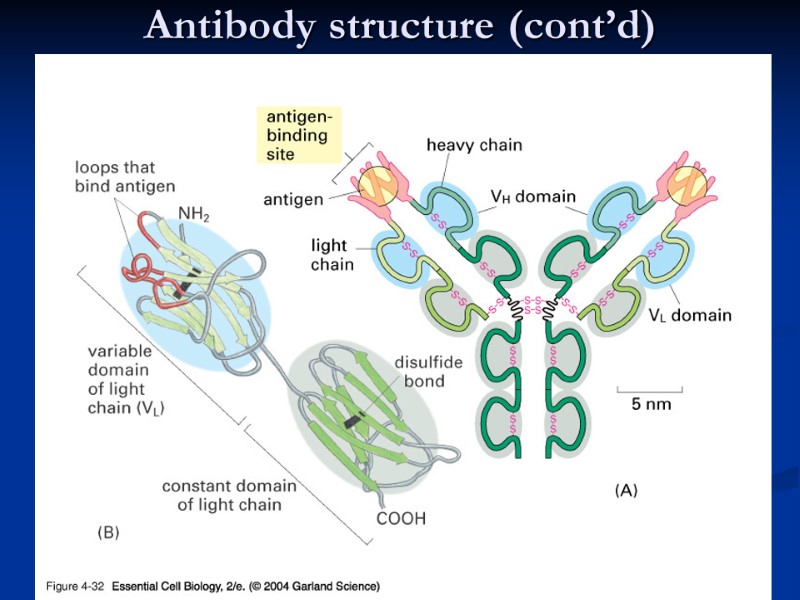
Antibody structure (cont’d)

Antibody structure (cont’d) 1 – Fab domain 2 – Fc domain 3 – Heavy chain 4 – Light chain 5 – Antigen binding site 6 – Hinge regions -S-S- means disulfide bonds
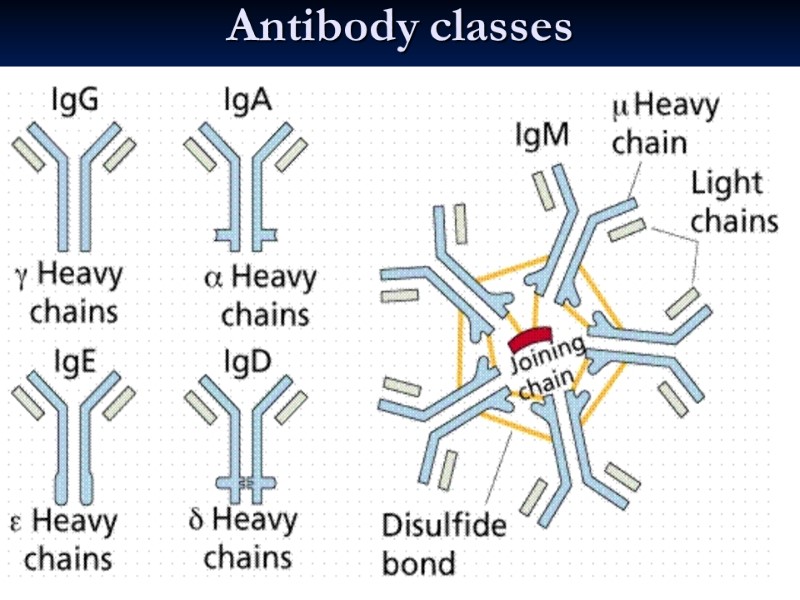
Antibody classes
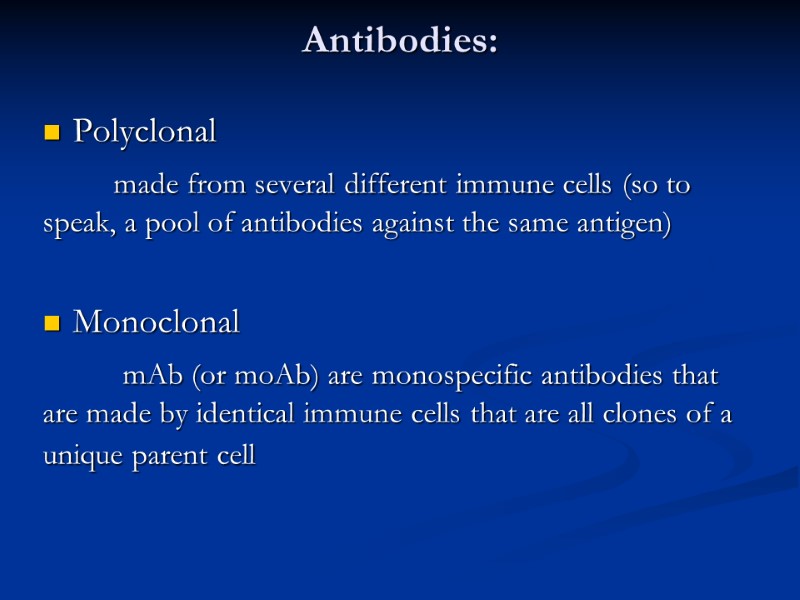
Antibodies: Polyclonal made from several different immune cells (so to speak, a pool of antibodies against the same antigen) Monoclonal mAb (or moAb) are monospecific antibodies that are made by identical immune cells that are all clones of a unique parent cell
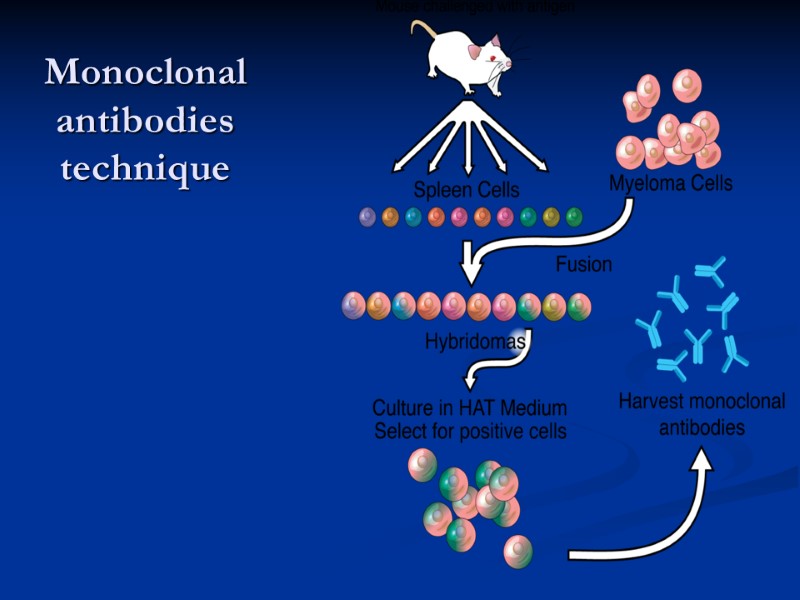
Monoclonal antibodies technique
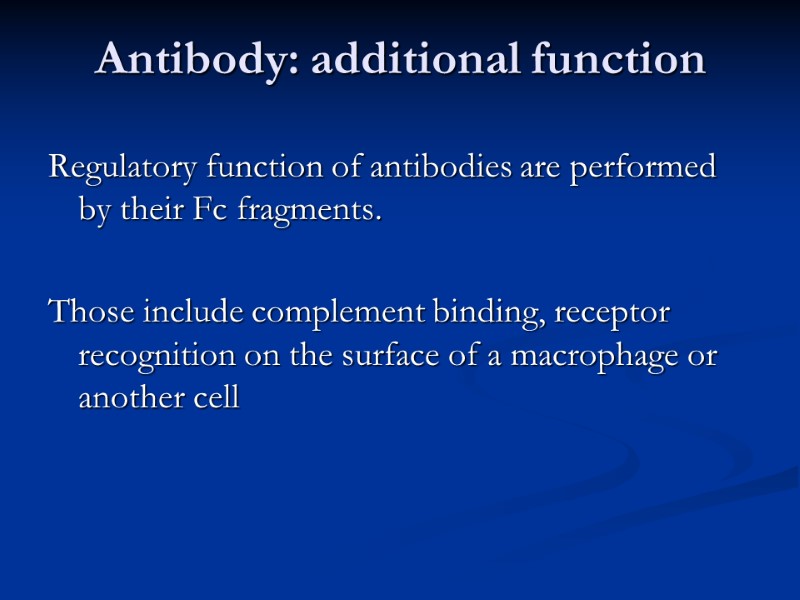
Antibody: additional function Regulatory function of antibodies are performed by their Fc fragments. Those include complement binding, receptor recognition on the surface of a macrophage or another cell
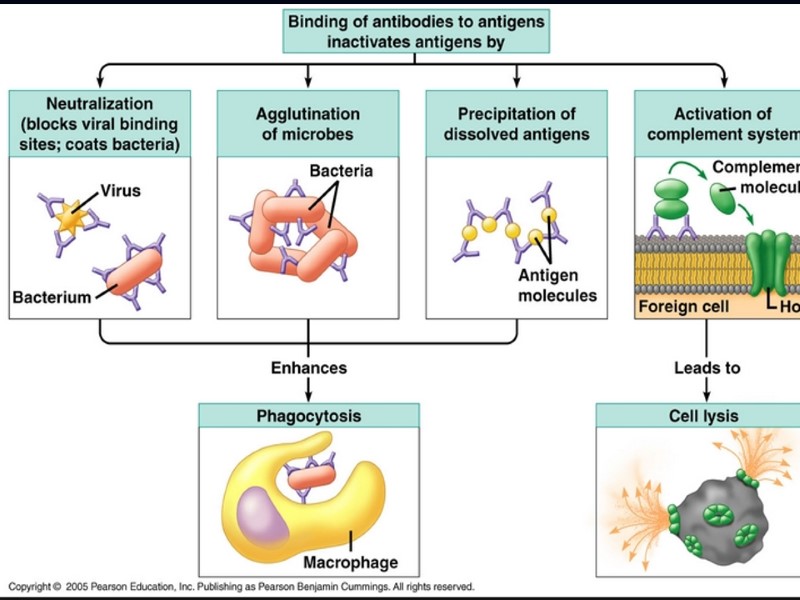

Two types of B lymphocytes B lymphocytes may differentiate into Plasma cells or Memory cells Plasma cells are ‘factories of antibodies’ Memory B cells are a B cell subtype that are formed within lymph nodes or the spleen following primary infection and are important in generating an accelerated and more robust antibody-mediated immune response in the case of re-infection (also known as a secondary immune response).
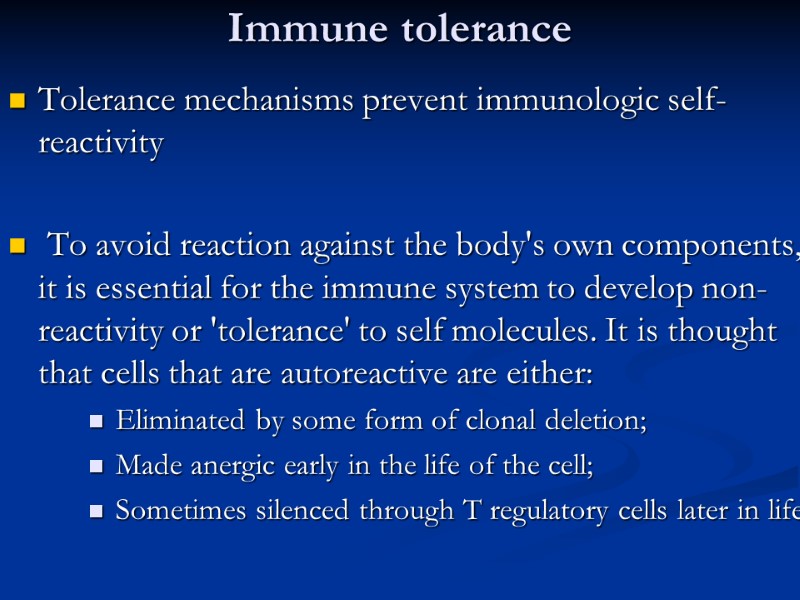
Immune tolerance Tolerance mechanisms prevent immunologic self-reactivity To avoid reaction against the body's own components, it is essential for the immune system to develop non-reactivity or 'tolerance' to self molecules. It is thought that cells that are autoreactive are either: Eliminated by some form of clonal deletion; Made anergic early in the life of the cell; Sometimes silenced through T regulatory cells later in life
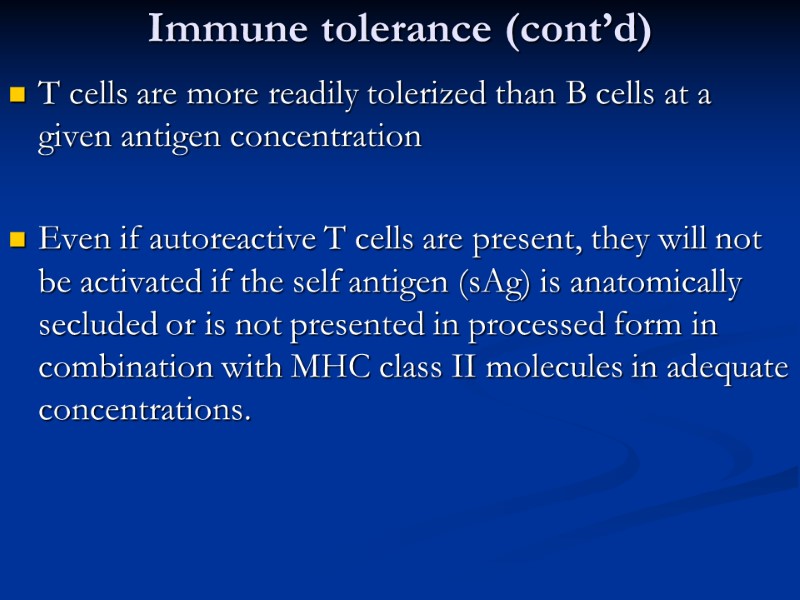
Immune tolerance (cont’d) T cells are more readily tolerized than B cells at a given antigen concentration Even if autoreactive T cells are present, they will not be activated if the self antigen (sAg) is anatomically secluded or is not presented in processed form in combination with MHC class II molecules in adequate concentrations.
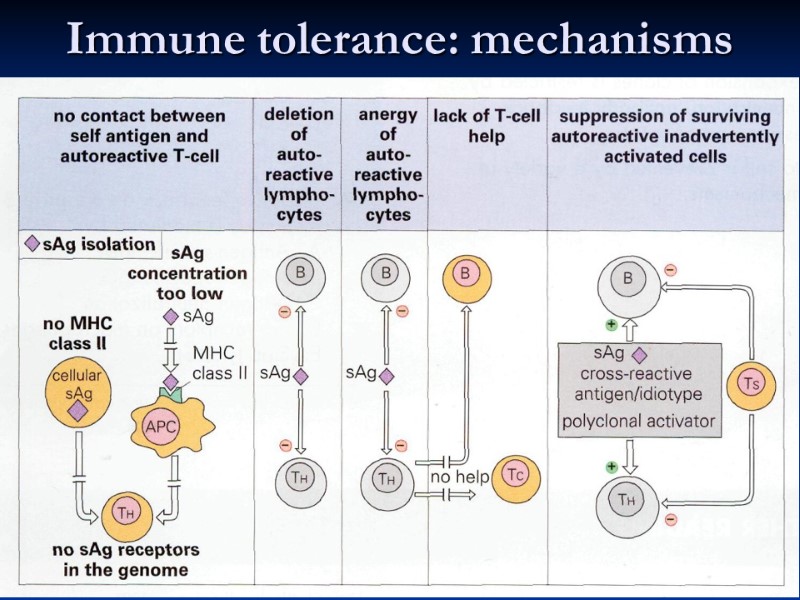
Immune tolerance: mechanisms

Thank you for your attention
13656-immune_tolerance.ppt
- Количество слайдов: 18

